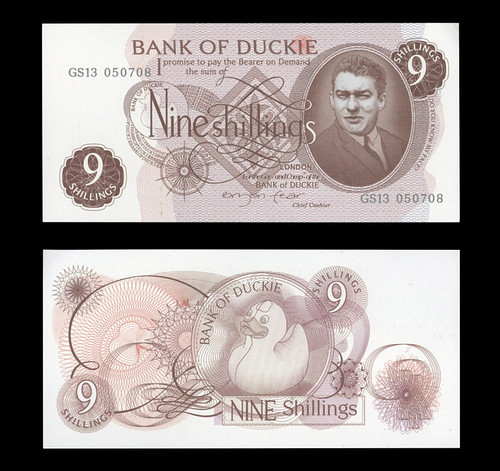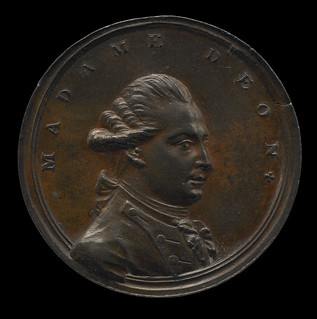
PREV ARTICLE
NEXT ARTICLE
FULL ISSUE
PREV FULL ISSUE
PRIDE MONTH BRITISH MUSEUM NUMISMATICSSome numismatic items are among the objects featured by the British Museum for Pride Month this year. -Editor What better time than Pride Month to look back at queer history through the ages? It's why the British Museum in London chose the month of June to reveal five new permanent objects with LGBTQ+ history that have been added to their permanent display. “We're really pleased to be putting these five objects on permanent display as part of our ongoing efforts to better represent the full range of stories and identities that can be found in LGBTQ+ history,” said Stuart Frost, Head of Interpretation and Volunteers at the British Museum. The British Museum has given GAY TIMES the exclusive first look at the five objects being added to their permanent display, as well as giving us the history behind each of them, which you can see below. Bank of Duckie Nine Bob note, 2008 (Room 68). Acquired in 2017 
Who remembers the ten-shilling note or the ten bob note as it was once known? The note was withdrawn from circulation in 1970 and disappeared in tandem with the popular expression with which it was so closely bound, ‘as queer as a nine bob note'. This Nine Bob note was made for use in a club event organised by Duckie in 2008, Gay Shame Goes Macho. Gay Shame was a reaction to the perceived increase in gender stereotyping and commercialisation of Gay Pride events from within the LGBTQ community. British bank notes carry a portrait of the Queen, but here instead – surprisingly – we have the East End gangster Ronnie Kray (24 October 1933 – 17 March 1995). In the margin of the cameo the image asks ‘Do you know my face?'. Ronnie was gay – something that was recognised and known by many at the time. The Kray twins – Reggie and Ronnie – were sentenced to life imprisonment in 1969. A ten shilling note also usually carries a depiction of Britannia but here we have a rubber duck instead. Yet, for all these changes the design skilfully evokes the appearance of the original ten shilling note.
Medal of Chevalier d'Eon (Room 2). Acquired c1860 D'Eon was celebrated 18th-century soldier, diplomat and spy. They lived openly as a man and as a woman in France and England at different stages of life, drawing much public interest. Charismatic and talented, the Chevalier inspired the production and circulation of images and there are large number of prints of them in the Museum's collection. The Chevalier was born on 5 October 1728 to a minor aristocratic family in Burgundy. Bright and articulate, d'Eon worked as a spy and diplomat for King Louis XV of France in Paris. After a stint as a Captain in the French Dragoons, they were sent to London as a diplomat. They embraced London life and continued to spy for the King before falling out with a superior. The Chevalier then sought political exile in London and published secret diplomatic documents in one of the most scandalous books of the time. The controversy caused by the book meant that d'Eon became something of a celebrity in London. There had long been rumours in both Britain and France that the Chevalier was a woman, which developed into intrusive, prurient public interest. Having acquired almost celebrity status by 1771, London bookmakers had even begun to take bets on d'Eon's gender as the public debate raged on. From late 1777 onwards – the year that our medal was produced – the Chevalier began to permanently present as a woman. In old age, the Chevalier lived with a widowed friend, Mrs Coles, in modest circumstances. Despite the fame and notoriety that had accompanied this remarkable life, d'Eon died in poverty in May 1810, at the age of 81. Today the Chevalier is recognised as a talented and tumultuous personality, who was celebrated both as a man and as a woman during a long and eventful life. You can find out more about the Chevalier d'Eon on our website, and explore their life through a number of prints.
To read the complete article, see:
Wayne Homren, Editor The Numismatic Bibliomania Society is a non-profit organization promoting numismatic literature. See our web site at coinbooks.org. To submit items for publication in The E-Sylum, write to the Editor at this address: whomren@gmail.com To subscribe go to: https://my.binhost.com/lists/listinfo/esylum All Rights Reserved. NBS Home Page Contact the NBS webmaster 
|
